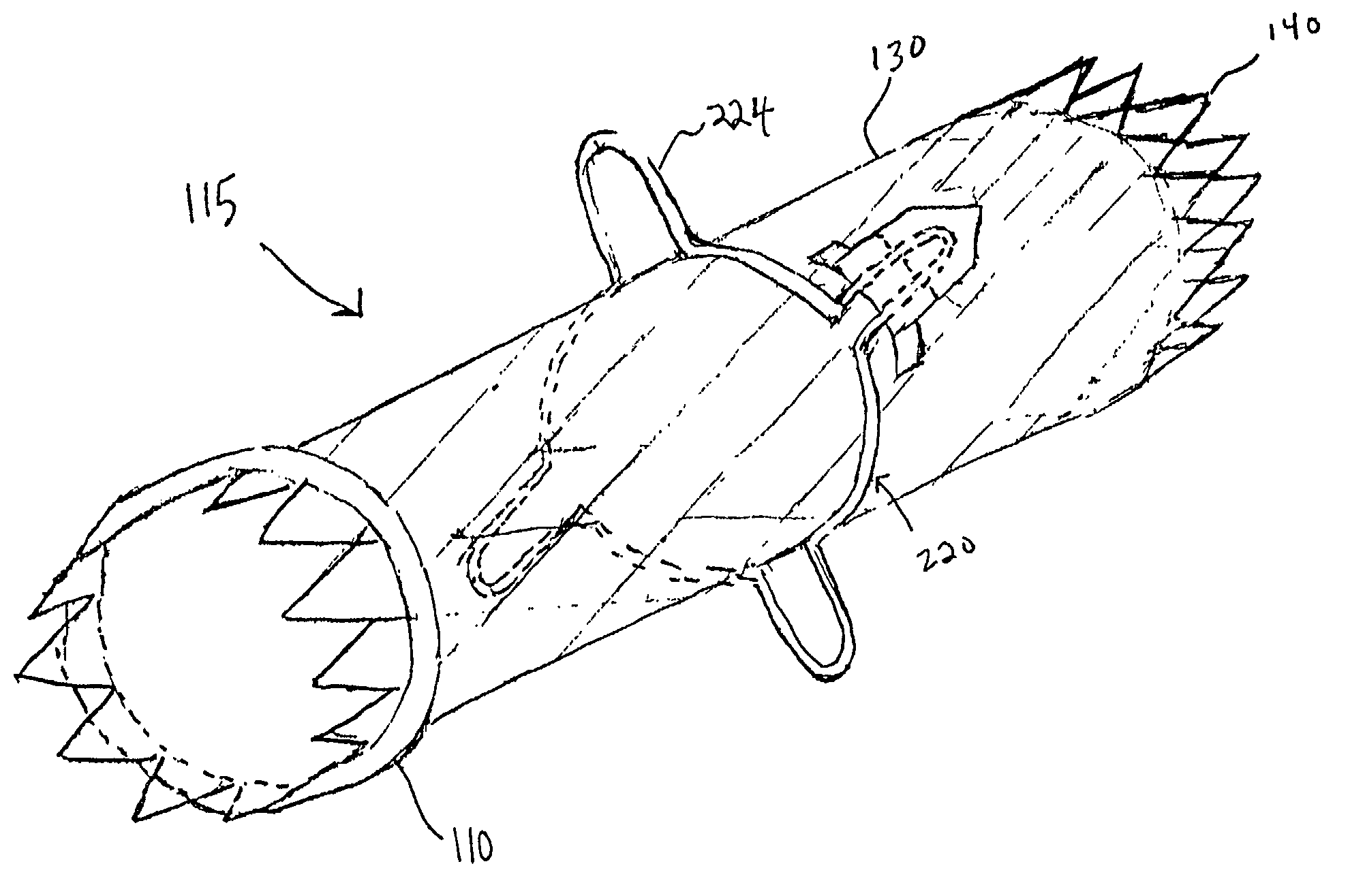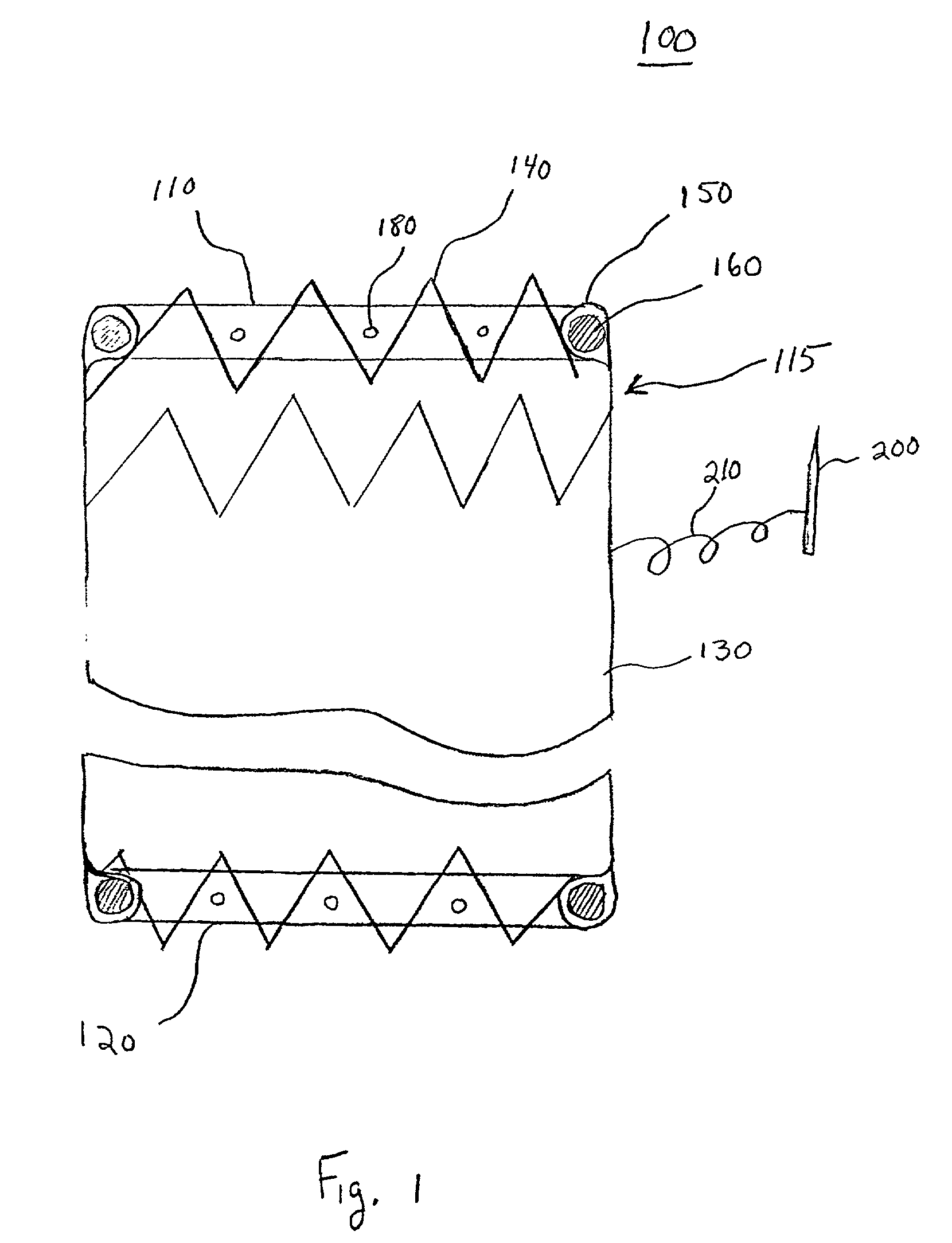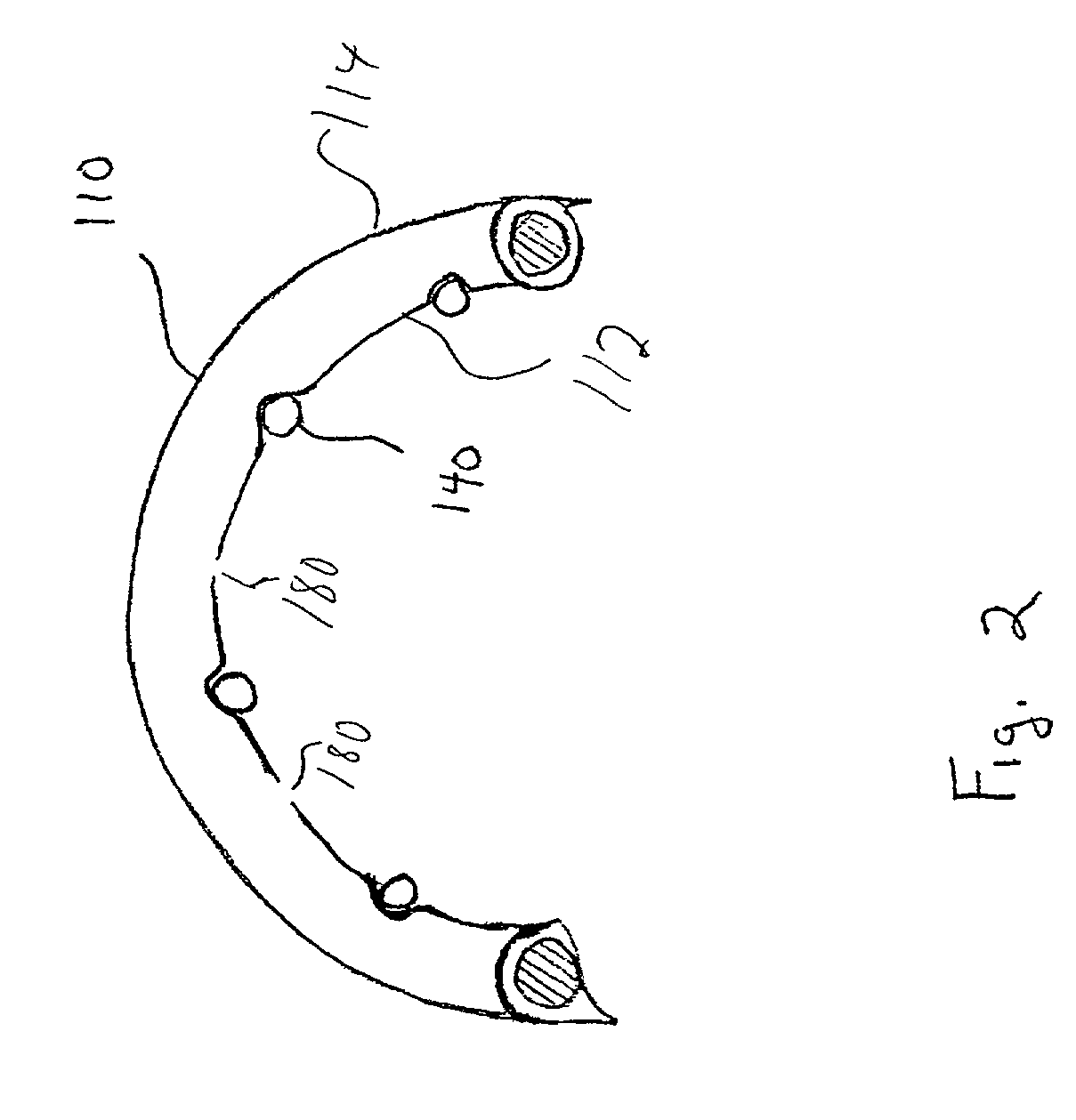Implant having improved fixation to a body lumen and method for implanting the same
a technology of prosthetic components and implants, which is applied in the field of surgical implants, can solve the problems of many fixation challenges of devices, stressful and time-consuming operation for patients and medical professionals, and limited technique, so as to reduce endoleaks and improve the effect of sealing
- Summary
- Abstract
- Description
- Claims
- Application Information
AI Technical Summary
Benefits of technology
Problems solved by technology
Method used
Image
Examples
Embodiment Construction
[0020]Referring now to FIG. 1, there is shown an endovascular implant or device 100. The device 100 comprises a prosthetic component 115 which includes a graft 130 and may also include a stent 140 positioned within the inside circumference of the graft 130. When the device is deployed endovascularly, it is desirable that the prosthetic component includes a stent. On the other hand, the prosthetic component 115 may consist solely of a graft, which may be desirable when the device is deployed laparoscopically or during open surgical procedures. Graft 130 is comprised of a woven fabric such as Dacron, polyester, or polytetrafluoroethylene, to form a cylindrical wall surrounding stent 140. Stent 140 is a wire mesh and can be of any suitable type and configuration as are well known in the art. For example, stent 140 may be braided, or filamentary, or laser cut, or etched and may be self-expandable or balloon-expandable. One exemplary form of a self-expanding stent is made from a shape-me...
PUM
 Login to View More
Login to View More Abstract
Description
Claims
Application Information
 Login to View More
Login to View More - R&D
- Intellectual Property
- Life Sciences
- Materials
- Tech Scout
- Unparalleled Data Quality
- Higher Quality Content
- 60% Fewer Hallucinations
Browse by: Latest US Patents, China's latest patents, Technical Efficacy Thesaurus, Application Domain, Technology Topic, Popular Technical Reports.
© 2025 PatSnap. All rights reserved.Legal|Privacy policy|Modern Slavery Act Transparency Statement|Sitemap|About US| Contact US: help@patsnap.com



